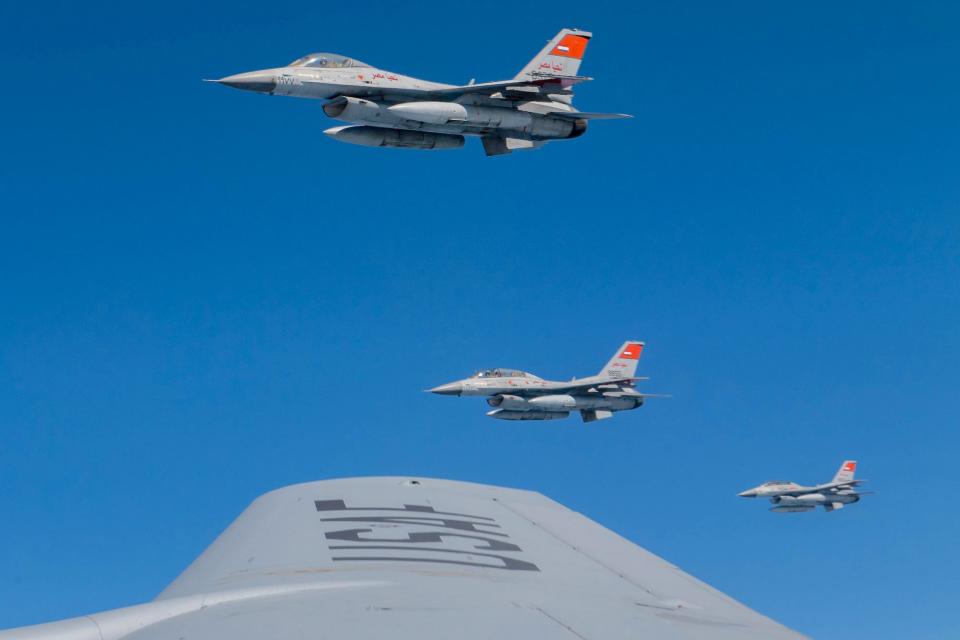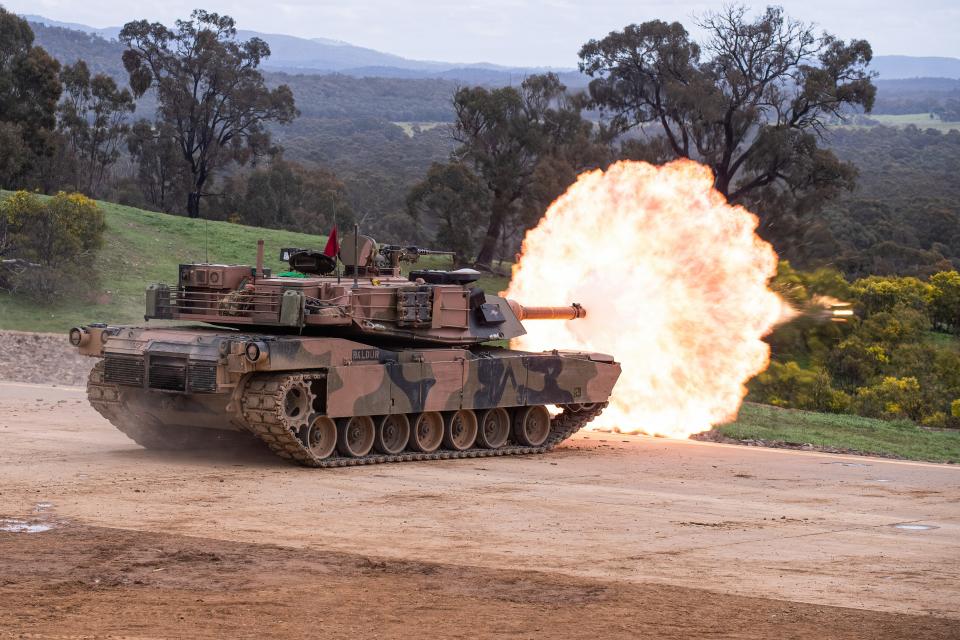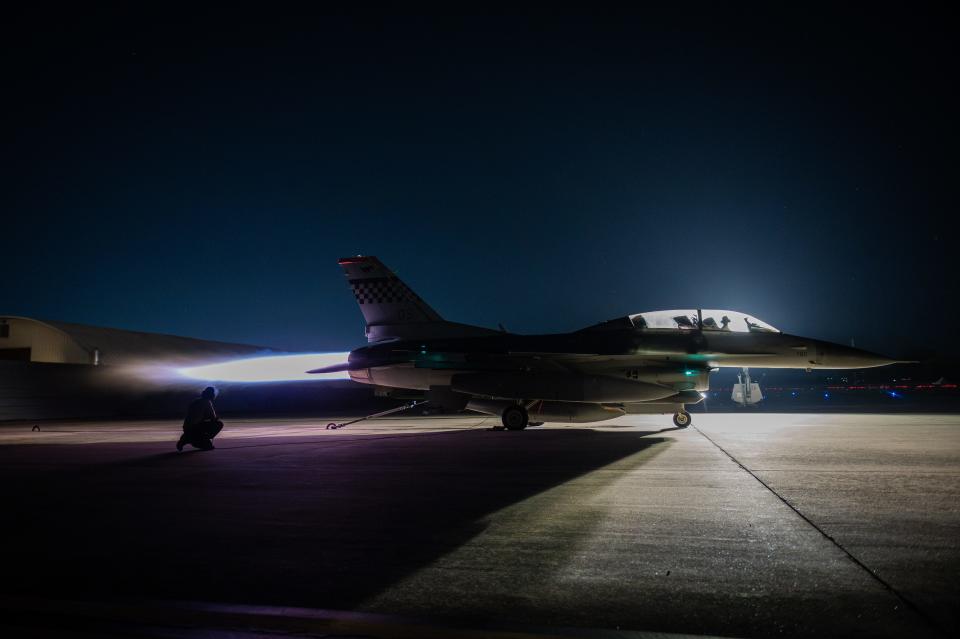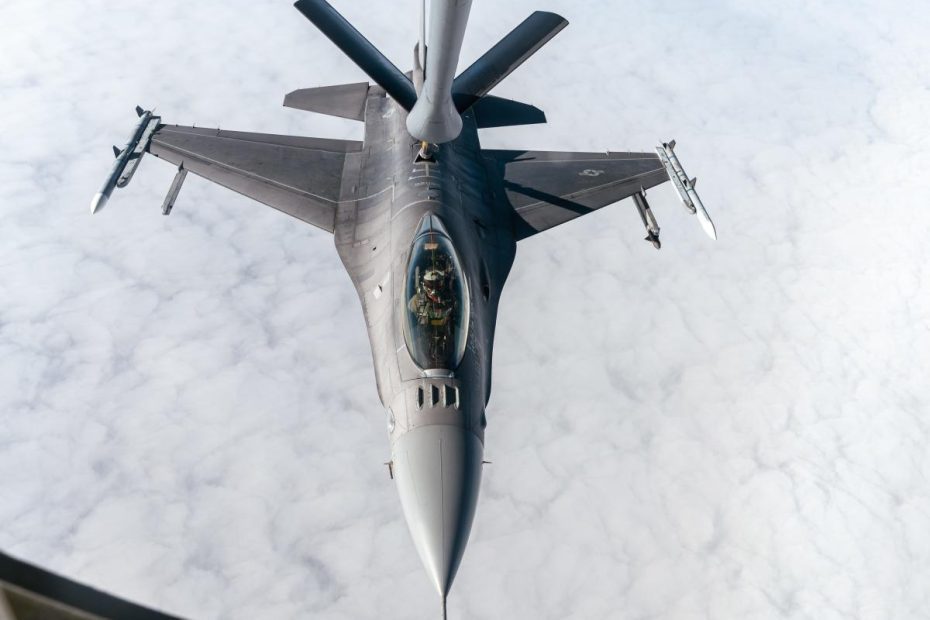-
Ukraine will receive its first F-16 fighter jets from its Western partners this summer.
-
However, the exact number of planes is unclear and Zelenskyy said it will likely not be enough.
-
He compared the problem to Ukraine's Abrams tanks, of which the country had only 31 and which it did not use much.
Western-supplied F-16 fighter jets are en route to Ukraine and will begin missions there later this summer.
But they may not yet be enough to make a difference on the battlefield, Ukrainian President Volodymyr Zelenskyy suggested in a discussion this week about what Ukraine needs. He compared the fighter jets to the U.S.-made Abrams tanks Ukraine received last fall.
Asked by Fox News host Bret Baier at the Reagan Institute whether the 31 Abrams Ukraine received when its counteroffensive was already in trouble made a difference, Zelenskyy replied: “I'm not sure that such a large number of tanks can change the situation on the battlefield.”
Speaking in Washington, DC, on Wednesday as the NATO summit was underway, he said: “It’s like the F-16 dialogue.” Its usefulness depends to some extent on numbers and timing.
“We always wait, like my mother waited for me after school,” Zelenskyy said. “This is the same, but much more serious.”
“The problem with the F-16,” the Ukrainian president said, “is the number and dates.”
The Ukrainian president said that because Russia deploys so many fighter jets “on Ukrainian territory,” a small number of F-16s will not make a difference.
“Even if we have 50, it's nothing. They have 300. Because we are defending, we need 128,” he said, adding that if Ukraine doesn't have that many F-16s, they “can't compare with them in the air.” He said that “it will be difficult.”


As Zelensky noted, his concerns about the number of F-16s coming and the timing of those deliveries echo conversations about the U.S.-supplied Abrams tanks, which arrived in Ukraine last fall. The U.S. sent just 31 M1A1 Abrams in total, and they were delivered to Ukraine months after the British and German tanks.
The Abrams is recognized as a “tank killer” and praised for its lethality and heavy armor. It has a fearsome reputation, especially given its performance in the Gulf War in the early 1990s. Experts and former tank operators have praised the Abrams' capabilities, noting that it is far superior to any Russian tank.
But the Abrams could not do the fighting it was designed for in Ukraine. There, massed armored attacks are not an option and tank-to-tank combat is rare. Threatened by drones, anti-tank weapons and mines, it is a target available in limited numbers.
For comparison, Ukraine received about 300 U.S.-produced Bradley infantry fighting vehicles, almost ten times more than the number of Abrams sent.


Zelenskyy's comments follow US Secretary of State Antony Blinken's announcement earlier on Wednesday that the first deliveries of F-16 fighter jets to Ukraine — from Denmark and the Netherlands — have begun.
“This summer, those fighter jets will be flying over Ukraine to ensure that Ukraine can continue to defend itself effectively against Russian aggression,” he said during the NATO public forum.
The arrival of the fourth-generation fighters will be significant for Ukraine, an upgrade to Kiev's Soviet-era air force and another marker of closer ties with the West. But there have been questions about how useful the fighters will be on the battlefield and whether there will be enough fighter jets and trained pilots to make a difference. There are also concerns that they will arrive significantly later than when Ukraine needed them most.
The West blames the long journey it takes to get F-16s to Ukraine on complicated logistics.
“The problem is that for F-16s it is not as simple as acquiring and transferring the aircraft. The aircraft have to be reconfigured by the various air forces from which they come to make them suitable and usable for the Ukrainian air force,” a NATO official told reporters at a briefing on the sidelines of the summit on Thursday.


The official also noted that training, logistics and skills are needed to operate and defend airfields, and said the year-long process of procuring and delivering the fighter jets was “actually pretty good.”
“When you watch a show like this, it's generally even [when an] “If an allied country gets a new aircraft like this in peacetime, it could take much, much longer to get everything in place,” the official said.
In a phone call with reporters on Thursday, White House national security adviser Jake Sullivan acknowledged that the “ramp-up period” to get F-16s operational in Ukraine has been significant. He added that the jets are expected to have an impact in the short term and give Ukraine the ability to retake territory currently occupied by Russia.
Read the original article on Business Insider

